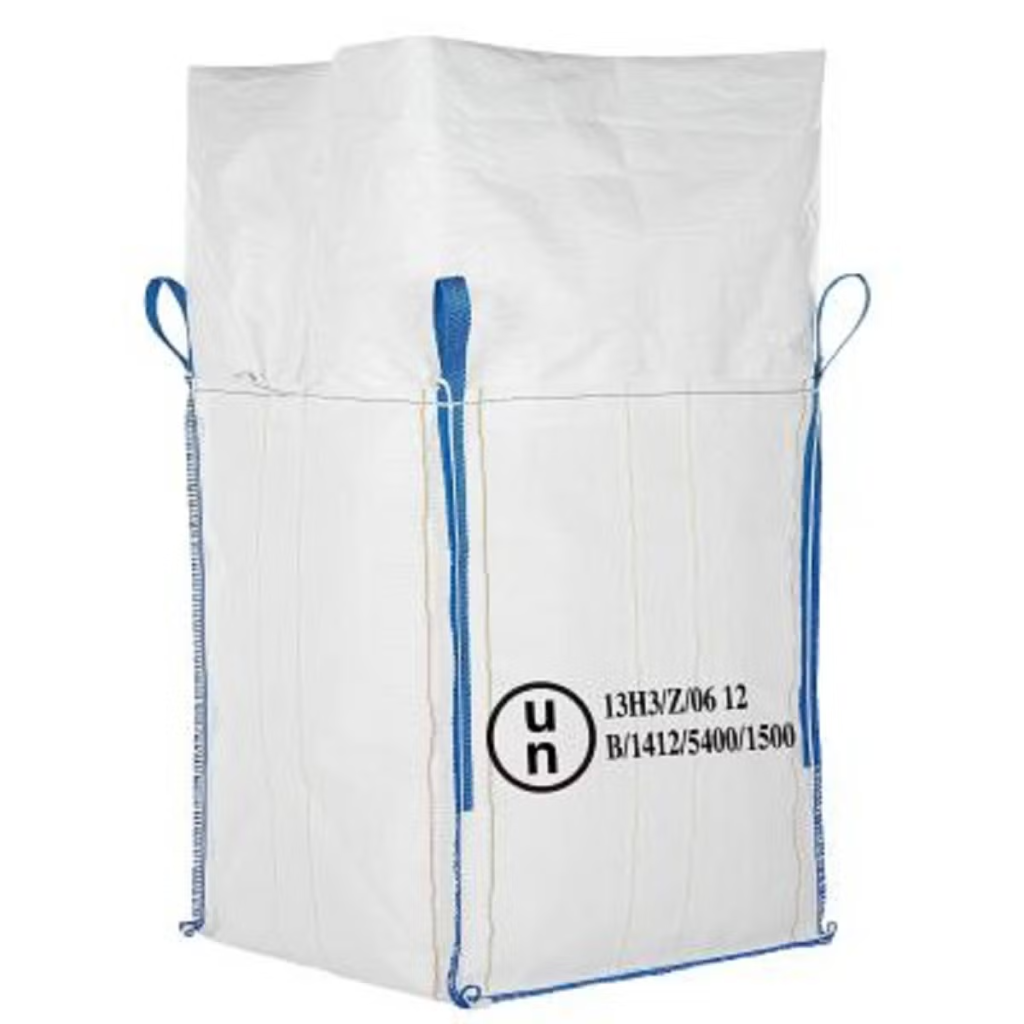
UN-certified transport solutions are manufactured in compliance with international safety regulations for the handling of hazardous materials. They enable the secure movement of chemical substances, explosives, toxic materials, and other potentially harmful contents. Each unit is tested and labeled according to relevant UN codes, making it suitable for road, rail, and sea freight. Their high durability and safety ratio help minimize transport-related risks.
Where to Use:
Widely used in logistics, chemical production, energy, recycling, and defense industries for the safe transport of hazardous waste, chemical compounds, and specially classified materials.
| Parameter | Value | |
|---|---|---|
| Fabric | 170–240 g/m² heavy-duty PP, UN-compliant structure | |
| SWL (Safe Working Load) | 500–2,000 kg | |
| Safety Factor | 6:1 (mandatory for hazardous materials) | |
| Standard / Certification | UN Certification, ISO 21898:2024, ADR Compliance | |
| Size Range | 90×90×120 cm – 100×100×150 cm (custom sizes available) |

Fully open top
Skirt
Filling Spout
Top lid
Flat bottom (closed)
Discharge spout
Star spout
Fully opening bottom
Single & double lift
Four-point lift
The UN code certifies that the bag has passed specific safety tests for hazardous materials, making it legally approved for transport.
Yes, using UN certified bags is a legal requirement for transporting hazardous substances.
Yes, they are approved for road, sea, and rail transport under ADR and IMDG regulations.
It depends on the material being transported—liners are recommended for powders, chemicals, or liquids.
Each UN bag is coded for specific hazard classes, so the bag must match the material’s classification.